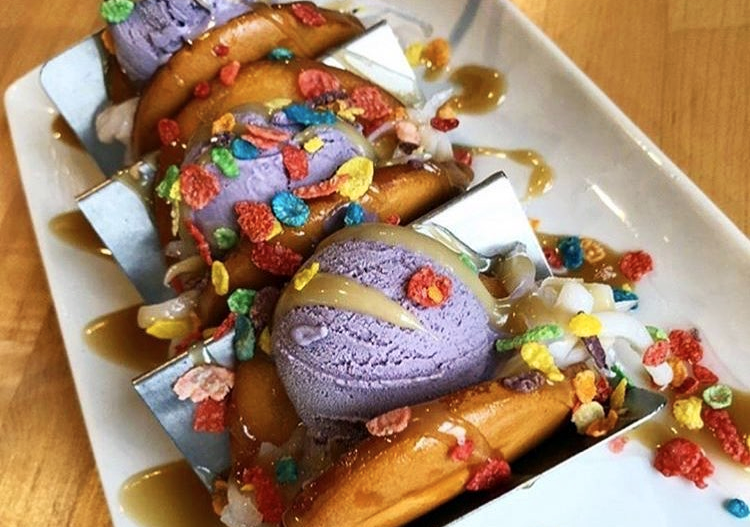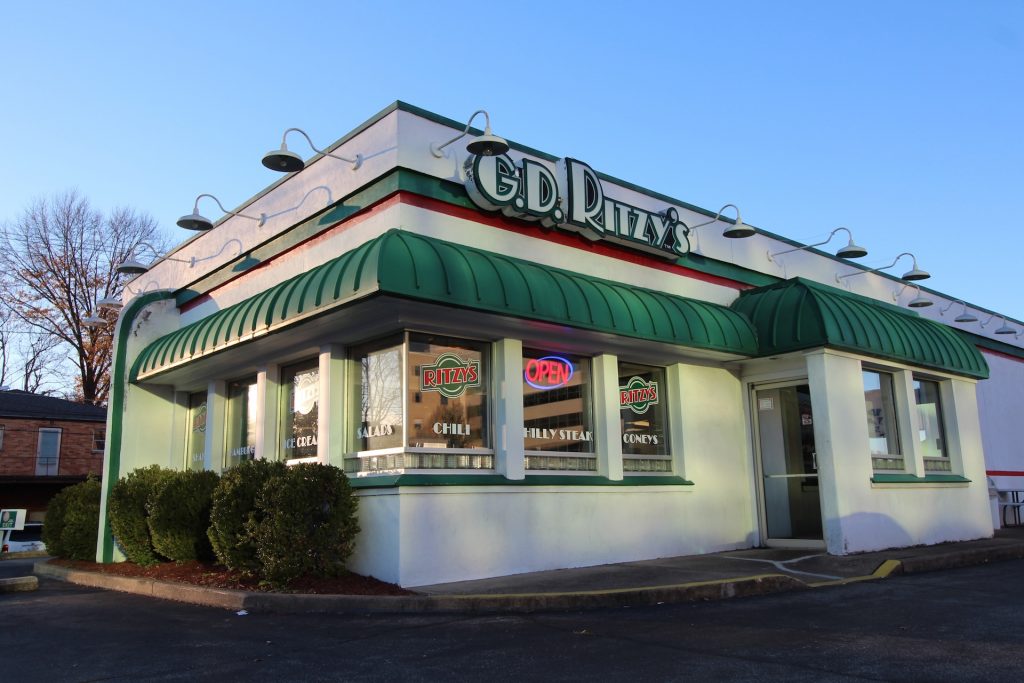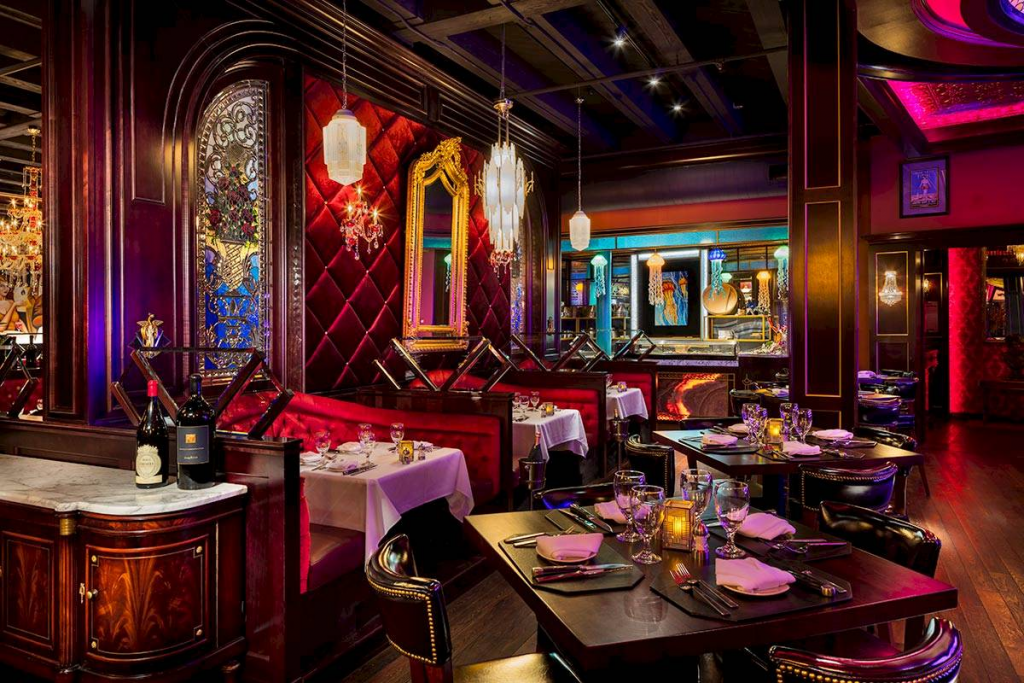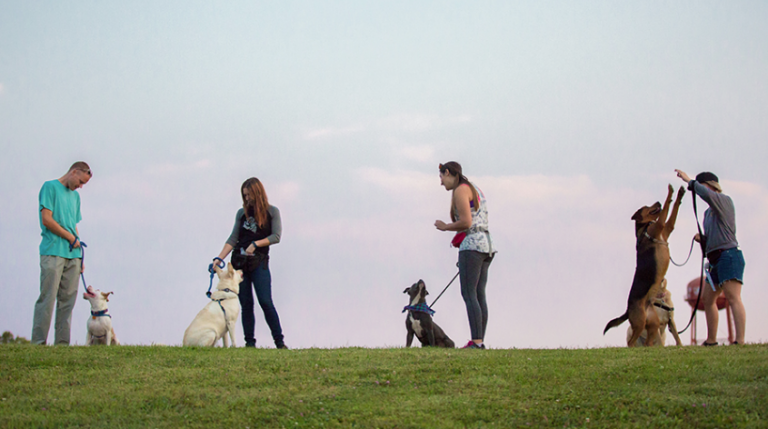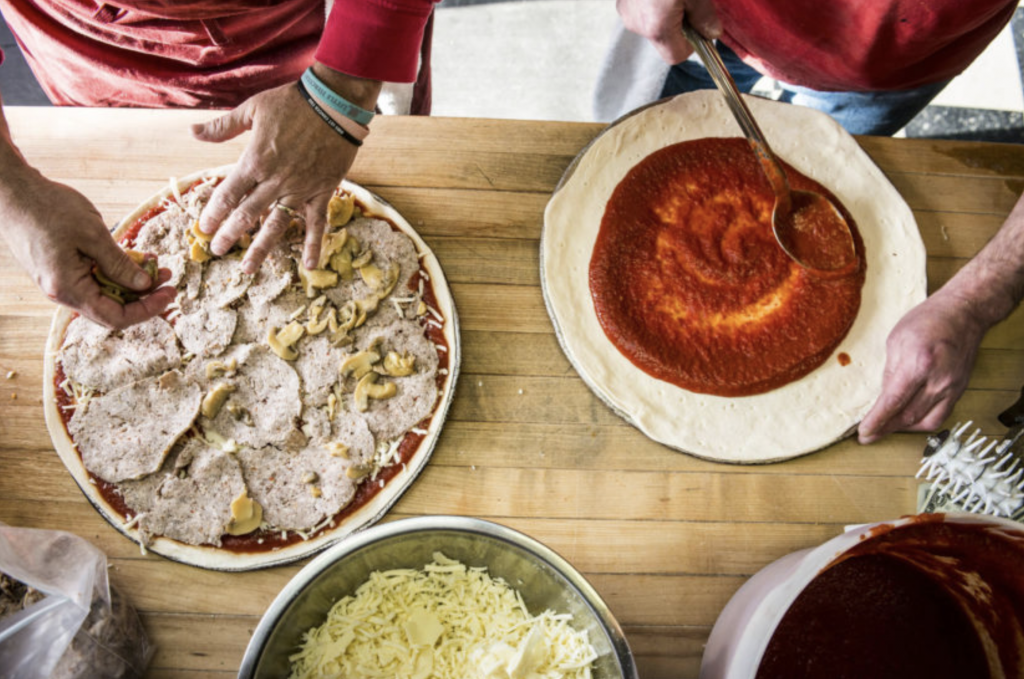Originally published in the 2018 issue of (614) FAMILY

Game nights are increasingly popping up at bars and breweries, and not just trivia. Old school board games and their modern-day descendants tap into the social necessity for competition. But parents are left out of the intersection of beer and board games as much as their kids—unless you head to Tabletop Game Cafe in Clintonville, a place that finally brings pints and half pints together.
With more than 500 games in their enviable inventory, offering the opportunity to “try before you buy”, owner and parent Aaron Brown wanted to create a destination for families as well as adults. But it’s not always about competition.
“We have more than 20 cooperative games where everyone is on the same team playing against the game. I recommend those to a lot of families with mixed-age kids,” he explained. “That way the kids aren’t playing each other on an uneven field. With cooperative games, they’re all working together.”
Imagine a play cafe, but for older kids, their peers, and parents. It’s genuinely multigenerational, which lots of so-called “family” activities really aren’t. Most relegate adults to simply a supervisory role. Tabletop is analog and interactive for everyone. It’s about disconnecting, and reconnecting.
For a minimum purchase of $6 per adult between food, beverage, and retail sales, you can pull up a stool and get your game on. Kids under 13 are even included with a grownup. Food options are fresh and better than your average bar fare, from hot sandwiches and espresso drinks to sweet and savory empanadas. There are also three dozen local and regional beers from which to choose between drafts, bottles, and cans, also a better selection than most bars.
“I love Argentinian empanadas because they’re the perfect gaming food. They’re small enough to hold in one hand and eat while you play,” he explained. “We started with those, but added deli sandwiches and some more snacks over time.”
Just because beer and board games go together, that doesn’t mean there isn’t any bureaucracy. Tabletop opened in September of 2016, but couldn’t add alcohol sales until the following February.
“Because Clintonville is a local option area, I had to collect signatures for a liquor license—twice. The first time, they discounted about 20 signatures and we ended up seven short. So I had to do it all again six months later to get on the ballot,” he recalled. “We had plenty of support once there was a vote. People understand Clintonville isn’t going to turn into campus anytime soon.”
Board games aren’t always about skill. There’s still a lot of luck, and the same is true of most businesses, occasionally serving a surprise clientele.
“We have tons of families who come in, including grandparents. But an unexpected demographic that we really appeal to is divorced parents who have weekend visitation with their kids—particularly dads and daughters,” Brown noted. “Board games don’t really have a presumed gender like a lot of activities. If you ask people what mothers and daughters do together, or what fathers and sons do together, you’re going to get a long list. But I didn’t realize how effective games are at crossing a multigenerational gender divide. We have regulars who come in on the weekends, with the time they have together, and they bond over board games.”
Games offer academic and developmental benefits, more tangible and tacit than the scholarly abstractions of game theorists. From math and science to history and geography, games can stretch the brain—tapping into popular culture, without becoming a monoculture. (Though it doesn’t hurt to have Stranger Things introduce a new generation to Dungeons & Dragons.)
“We have two kids who are academically doing great, and I attribute a lot of that to the board games we play, and how much they played growing up,” he opined. “It’s a learning experience, but they’re having fun. Homework can be a chore, but you can incorporate many of the same skills into a game, and all of a sudden kids want to do it.”
Board games also create opportunities for children and young adults who may struggle with sports or other common adolescent activities due to mobility challenges and disabilities which aren’t always obvious.
“We have several groups of kids on the (autism) spectrum who come here, and I love sharing games with that community. For kids who have trouble figuring out social cues, they often understand games really well because it’s a strict rule set,” he revealed. “These kids can interact with each other over a game and they have a great time. I think it’s important for them to have an opportunity to succeed and show their strengths to each other.”
Like any new pursuit, there’s always some apprehension. Brown doesn’t expect his staff to know the minutia of every game, just have a good grasp of a handful of go-to options for first-time families or those who may need a nudge in the right direction.
“On a Saturday night, there are groups of people, cracking up, and having a good time. One roll changes the whole game, and the table explodes,” Brown explained. “We have couples and families who come here to meet up with friends and try something new, who then become regulars. It’s an energy and an atmosphere you’re not going to get just playing at home.” ▩
For a complete list of games available and upcoming events, visit tabletopgamecafe.com
WHAT MAKES A PERFECT GAME NIGHT?
Aaron Brown isn’t just a guy who love games. He understands what makes a great game night and what makes a game great, having become a frequent source of insight for would-be game creators as they refine their ideas and seek investors.
Board games, not bored games
“I love games in which every turn you have to make a decision, there is something to do, you can make some mistakes early and recover later, and games you can teach in about 15 minutes and finish in about an hour.”
It’s okay to keep it simple
“I don’t need a super complicated game. I like to have several games over a game night. If you play one game for six hours, you probably only have one winner. But if you play three or four games, you can have multiple victors, and everyone gets to figure out what kind of games they like.”
Something for everyone
“If you play just one game and someone doesn’t like it, that’s their whole night. If everyone loves a game, you can always play it again. If not, you can try something new. Everyone isn’t going to like every game, so having different kinds of games increases the odds that everyone will find one they really enjoy.”
